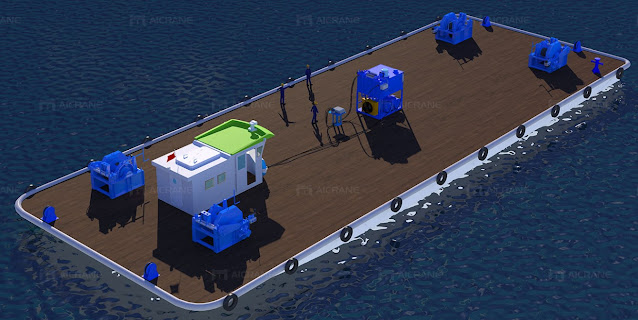Future Trends and Advancements in Offshore Winch Technology
Offshore winches have revolutionized the maritime industry, enabling efficient and safe operations in various sectors, including oil and gas exploration, offshore construction, and renewable energy projects. As technology continues to advance at a rapid pace, the future of offshore winches holds exciting possibilities. In this article, we will explore the emerging trends and advancements in offshore winch technology, paving the way for enhanced performance, reliability, and safety.
Remote Monitoring and Control:
One of the key future trends in offshore winch technology is the integration of advanced remote monitoring and control systems. With the advent of Internet of Things (IoT) and connectivity advancements, offshore winches will be equipped with sensors and data acquisition capabilities. This will allow operators to monitor critical parameters such as load tension, line speed, and temperature in real-time from onshore control centers. Remote control functionalities will enable operators to adjust winch operations from a safe location, minimizing human intervention in hazardous offshore environments.
Automation and Artificial Intelligence:
The incorporation of automation and artificial intelligence (AI) in marine and offshore winch systems is poised to revolutionize operations. AI algorithms can optimize winch performance based on various parameters, such as load conditions, environmental factors, and power consumption. Automated features like dynamic line spooling and intelligent tension control will enhance efficiency and reduce the risk of equipment damage. Additionally, AI-powered predictive maintenance algorithms will enable proactive maintenance scheduling, minimizing downtime and extending the lifespan of winch components.
Enhanced Safety Features:
Safety is a paramount concern in offshore operations, and future offshore winch technology will prioritize safety enhancements. Intelligent winch systems will incorporate advanced safety features, such as collision avoidance sensors, emergency stop mechanisms, and automated overload protection. These features will mitigate risks and protect personnel, equipment, and the environment in offshore environments.
Lightweight and High-Strength Materials:
Advancements in materials science will lead to the development of lightweight and high-strength materials for offshore winch construction. Carbon fiber composites, advanced alloys, and nanomaterials will replace traditional heavy steel components, reducing overall winch weight without compromising strength and durability. Lightweight winches will have a positive impact on vessel stability, fuel consumption, and installation flexibility.
Energy Efficiency and Power Generation:
The future of offshore winch technology will witness increased emphasis on energy efficiency and power generation capabilities. Energy recovery systems, such as regenerative braking, will harness and convert excess energy during winch operations, reducing power consumption and optimizing overall system efficiency. Integration of renewable energy technologies, such as solar panels and kinetic energy recovery systems, will enable winches to generate power on board, reducing reliance on external power sources.
Advanced Control Interfaces:
Human-machine interfaces (HMIs) will undergo significant advancements in offshore winch systems. Intuitive touchscreens, augmented reality (AR) displays, and gesture recognition technologies will simplify winch control and monitoring. Operators will have access to real-time data visualization, 3D simulations, and interactive training modules, enhancing situational awareness and reducing the learning curve.
Conclusion:
The future of offshore winch technology is poised to bring remarkable advancements, enhancing efficiency, safety, and sustainability in maritime operations. Remote monitoring, automation, and AI algorithms will optimize performance and reduce human intervention. Lightweight materials, enhanced safety features, and energy-efficient systems will contribute to improved vessel operations. Moreover, advanced control interfaces will revolutionize the way operators interact with winch systems.
As these trends and advancements continue to shape the offshore winch industry, we can anticipate increased productivity, reduced downtime, and minimized risks in offshore operations. The collaborative efforts of engineers, researchers, and industry professionals will drive innovation, enabling offshore winches to meet the evolving demands of the maritime sector and support the development of a more efficient and sustainable offshore industry.




Comments
Post a Comment